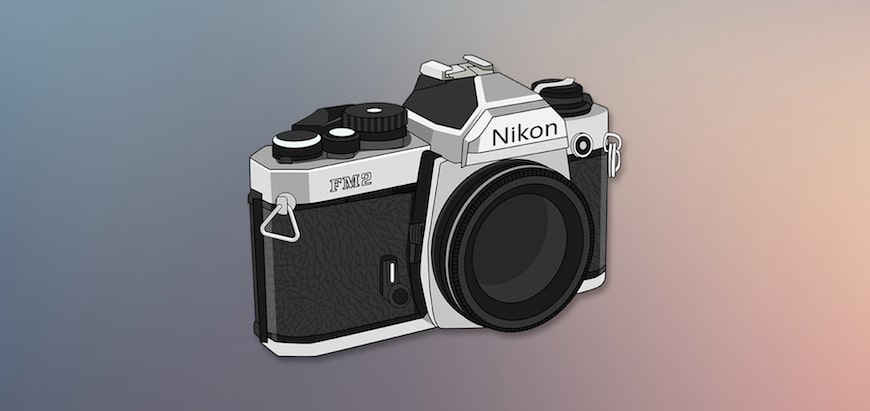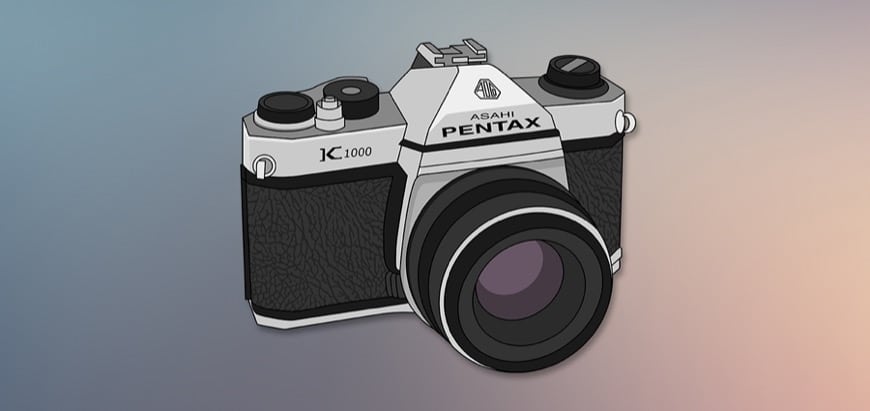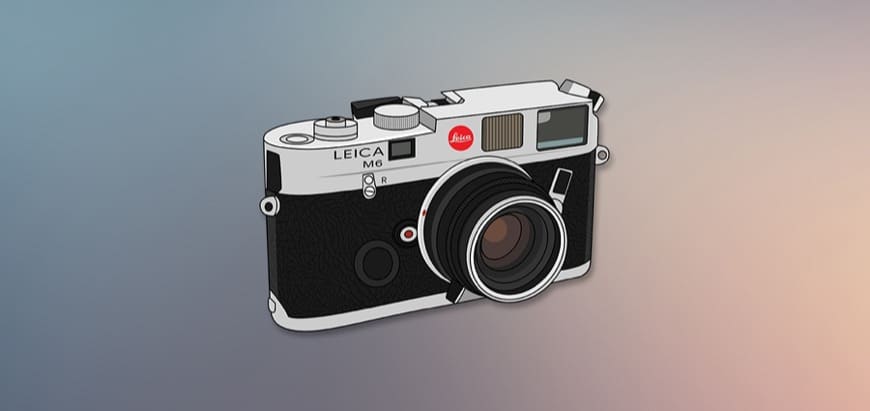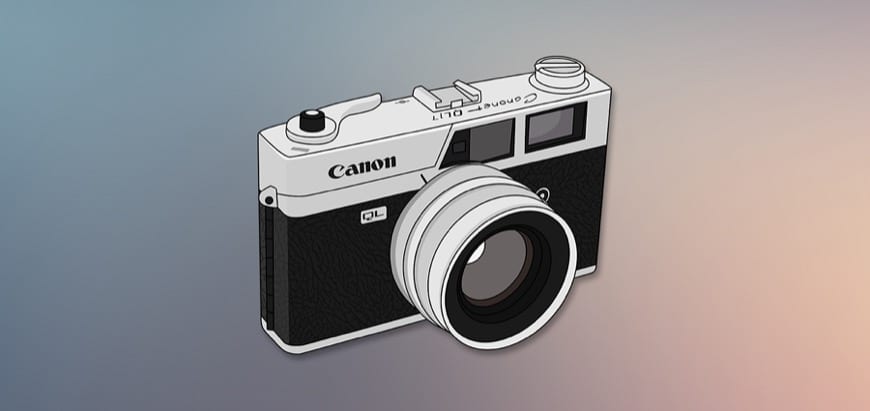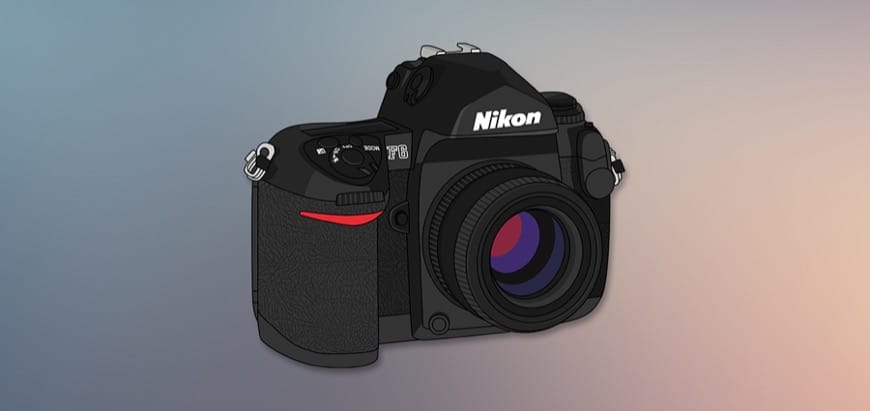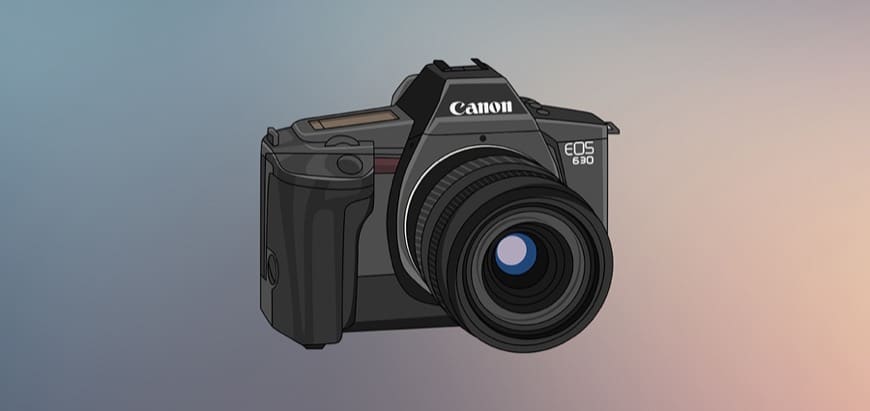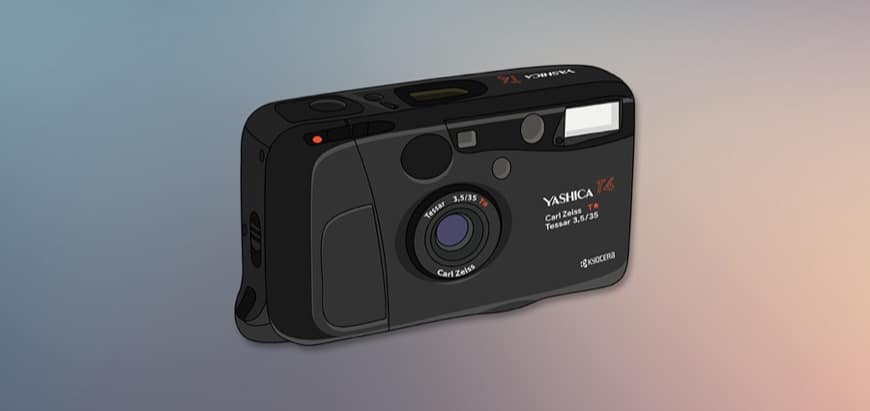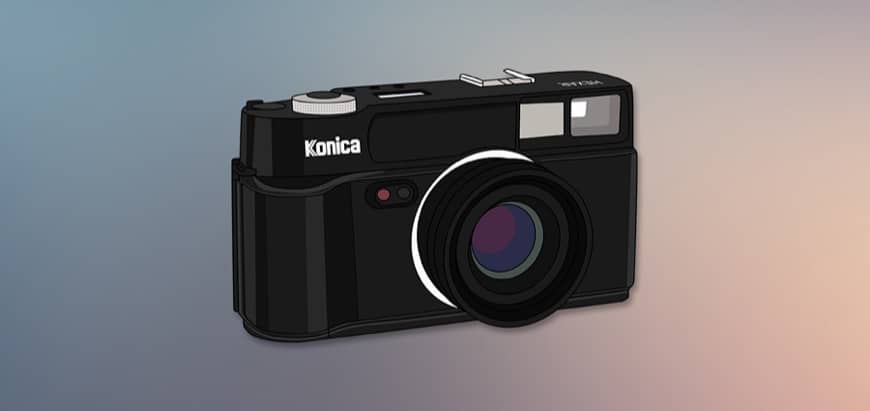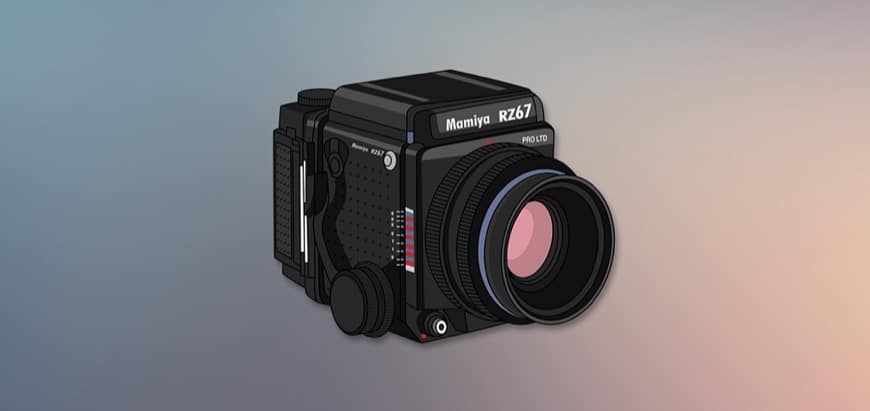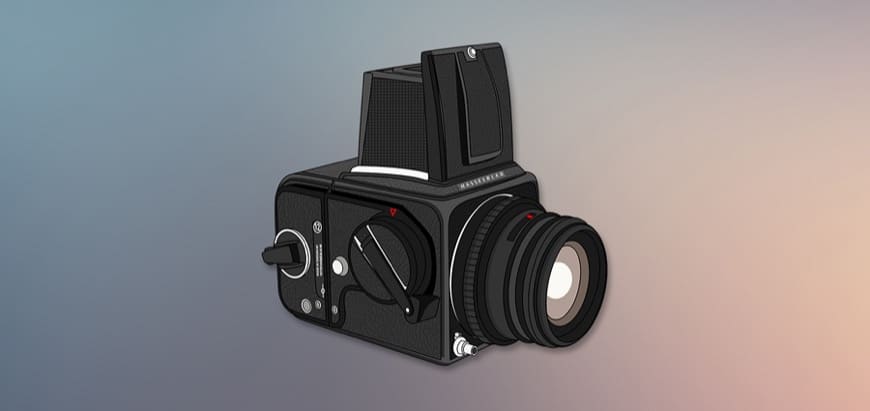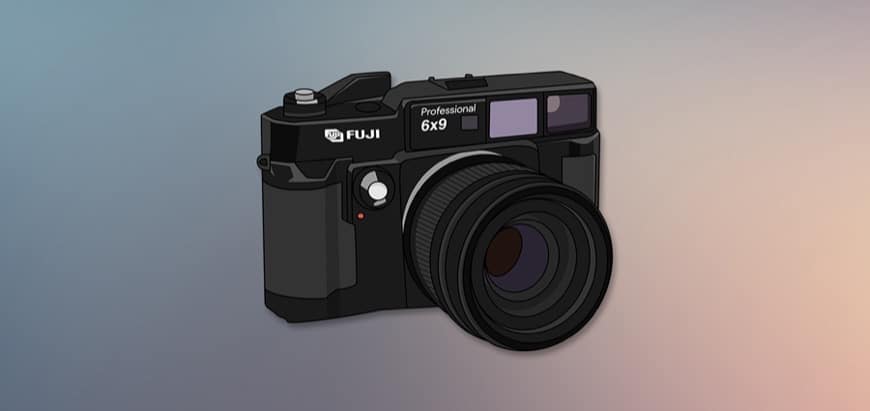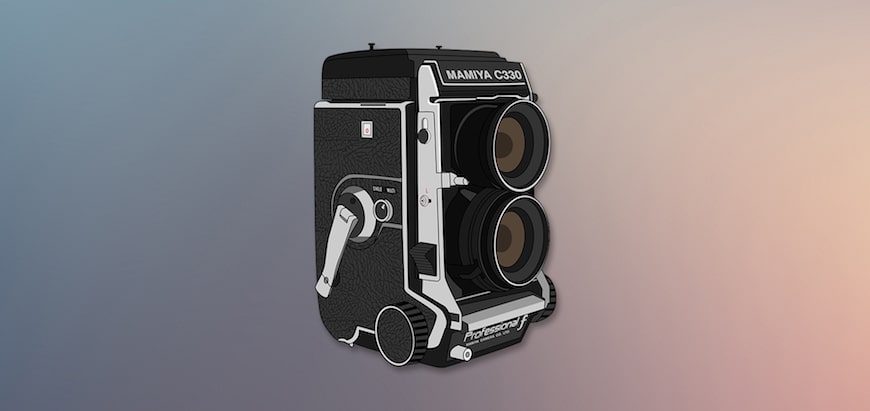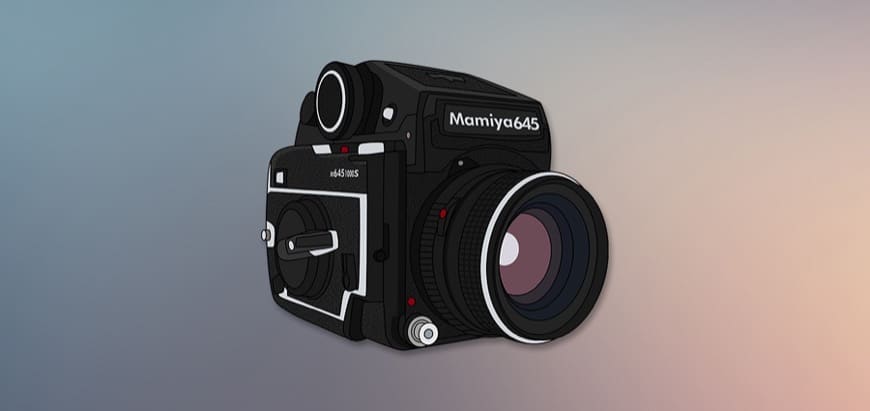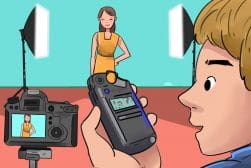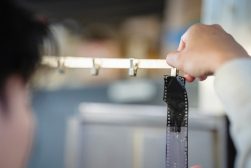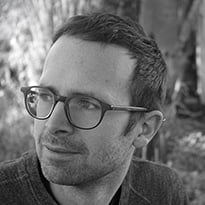
Best Film Cameras in 2023 (+10 Tips on How to Buy)
Want to try some analog photography? This beginner's guide to the best film cameras will help you choose your first budget 35mm or medium format film camera.
Film cameras are making a resurgence in 2023, with many photographers craving that analogue photography experience.
There are hundreds of film cameras available, many of which can be bought second-hand for budget prices.
However, you need to know what you’re looking for – and that’s where this guide comes in!
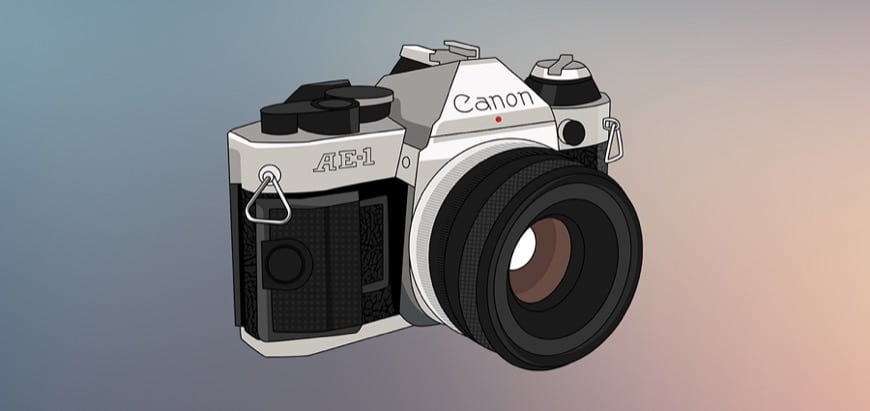
A great value 35mm film camera with a large viewfinder and great ergonomics and image quality. A Joy to shoot!
After hundreds of hours spent in darkrooms developing film and scanning negatives over the years, the Shotkit team has the experience and knowledge to recommend all the best film cameras available today.
We’ll be concentrating on single-lens reflex (SLR) 35mm film cameras, but will also introduce some compact, point and shoot, rangefinder camera and medium format models too.
So grab your rolls of film, vintage lenses and light meter and let’s get stuck in!
Table of Contents
Best 35mm Film Cameras in 2023
We’ve split this guide up into 2 sections – the first is about the humble 35mm film camera and the second is concerning our medium format recommendations.
We’ve left large format out of the list completely, since, due to their size, weight, clunkiness and lack of availability, they’re unsuitable for most film photographers.
35mm film cameras are the obvious starting point for many beginning their journey in analog photography, and for good reason.
They’re compact, lightweight and if you opt for the more common SLR design, what you see through the viewfinder is exactly what you will photograph.
The big chunky dials found on many basic models along with the built-in light meters make 35mm film cameras a joy to use.
(If you don’t have a professional light meter, consider using your phone and one of these light meter apps.)
See also the differences between SLR and DSLR cameras.
Canon AE-1 Program (Best Vintage Film Camera)
The Canon AE-1 Program was the beginner film camera for hundreds of thousands of photographers around the world and with one of these around your neck, it’s not unusual for people to stop you and ask you about it.
If you set the AE-1 to “program” mode, it shoots completely automatically, and in 1981, this was something of a gamechanger.
You also have the option of shooting in aperture priority and shutter priority if you wish, or go fully manual.
The viewfinder is beautifully bright (arguably one of the best 35mm focusing screens ever made) and the number of lenses available is extensive.
The light meter is accurate and while most of this film camera is mechanical, there’s a fair amount of electronics on board so you’ll need a slightly obscure battery for it to operate, though it will last a year, if not longer.
Nikon FM-2
Produced from 1982 all the way through to 2001, the Nikon FM-2 (and the almost-identical FM-2n) is easy to track down and, having been built to last, you’ll be unlucky to pick one up that doesn’t work perfectly. A huge range of lenses is available.
The Nikon FM-2 introduced some small improvements over its predecessor, such as the maximum shutter speed of 1/4000th of a second (the fastest available at the time, in part thanks to its titanium shutter leaves) and a brighter focusing screen.
This 35mm film camera is mechanical but the built-in light meter does require a small battery (easily available).
The camera comes with a few other nice features, such as a self-timer, a lock to prevent you from releasing the shutter accidentally, and a quick way to create multiple exposures.
Pentax K1000
Made between 1976 and 1997, there are plenty of K1000 film cameras available to purchase, along with a wide range of lenses. Its sturdy build, classic single lens reflex styling, and functionality make it a great option on the second-hand camera market.
The K1000 is a fully mechanical film camera and while this means that there are no program or aperture priority modes, its simplicity makes shooting with it a beautifully tactile experience.
The Pentax K1000 was often recommended to photography students because it is easy to use while teaching you the fundamentals of how to expose.
This 35mm film camera operates without batteries, though you’ll need a small one (LR44) if you wish to use the reliable and accurate light meter (it will probably last for years).
Olympus OM-1
Designed in 1972 to be compact like a rangefinder rather than chunky like single lens reflex cameras, the OM-1 is both sleek and beautifully styled — and very similar to a Leica which caused some problems when it was first released!
The OM-1 is notably different to the best film cameras listed above as it has an on/off switch, and instead of having a chunky dial on top, the shutter speed is set by a ring that sits next to the lens, with the camera shooting at a maximum of 1/1000th of a second.
Despite this film camera’s compact size, the focusing screen is large and beautifully bright, making it easy to use.
The built-in, through-the-lens exposure meter is accurate though you will need to track down a slightly obscure battery for it to work and your choice of battery may affect the light meter’s performance.
Leica M6
The Leica M6 stands out on this list for a couple of reasons, the first being the price: it will cost literally ten times as much as most of the others! Leica is known for producing some of the world’s most expensive cameras…
The second is that it is a rangefinder film camera, so what you see through the viewfinder isn’t what the lens sees, but is instead framed by guidelines depending on which lens you have attached.
Being a rangefinder also means that this film camera is much quieter when you click the shutter compared to an SLR.
Leica 35mm film cameras have their own distinct, minimalist aesthetic which, coupled with the tactile satisfaction of using them, makes them collector’s items.
If you look after it, it’s possible that in time, your M6 will slowly increase in value.
Canon Canonet QL17 GIII
The Canonet QL17 GIII is a compact rangefinder camera with a fixed — and very sharp — 40mm f/1.7 lens that, rather than turning a section of the barrel, is focused using a small tab. Focusing is fast and easy as a result.
Another distinctive feature is the speed with which you can load film, hence the QL — Quick Loading — in the camera’s name: you just drag the first portion of film across and close the door.
It has its own light meter but it only works if you are shooting in shutter priority mode. It requires a battery and with changes in technology, the battery you use might cause the light meter to behave differently than expected!
Nikon F6
Regarded by many as one of the best film SLR cameras that Nikon ever made, the F6 was the company’s flagship camera in production from 2004 right up until 2020.
Not quite as heavy and chunky as its predecessors, the F6 is built from magnesium alloy.
You’ll find a basic LCD on the top and on the back of the camera to show you your settings, and the F6 will churn through film at an impressive 5.5 frames per second, rising to 8 frames per second if you add a battery grip.
You can shoot fully auto and there’s fast and accurate autofocus available through a huge range of lenses. What’s more, the F6 will automatically rewind your film for you in just 9 seconds.
Canon EOS 630
Released in 1989, the EOS 630 was a slightly improved version of the groundbreaking 650 released two years beforehand which was Canon’s first of its line of EOS cameras. Canon’s new system brought a big leap in technology: autofocus.
The Canon EOS 630 brought faster autofocus as well as a few nice touches, such as back-button focusing and a burst speed of five frames per second.
As a prosumer camera, the plastic and metal body isn’t refined, and the ergonomics are not as well thought-out as some of Canon’s professional bodies.
However, you have access to an enormous range of EF lenses.
Some 630 cameras seem to drain batteries fairly quickly even when it’s switched off so keep a few spare 2CR5 batteries to hand.
Yashica T4
The Yashica T4 is a premium point-and-shoot film camera, compact enough to slip into a (large) pocket and arguably one of the best film cameras of its type ever made.
Produced for ten years from 1992, the T4 has a raft of desirable features, including a sharp Zeiss lens, autofocus, automatic metering, built-in flash, and a surprisingly close minimum focusing distance.
Being a point-and-shoot, the T4 is ridiculously easy to use: just switch it on, point it at your subject, and push the shutter button.
The Yashica T4 is a popular choice and music photographers have taken advantage of its sharp lens and hard flash to create a particular aesthetic, using it to shoot album covers for several major artists who perhaps favoured the nostalgic look of film photography.
As a result, it’s a little more expensive than you’d expect for such a cheap-looking plastic film camera!
Konica Hexar AF
Introduced in 1993, the Konica Hexar AF is a point-and-shoot film camera but with the option to override a lot of the automation and shoot manually.
It also looks like a bit of a hybrid: you could mistake it for a rangefinder, and the mixture of dials, buttons and LCD display create an odd combination of styles that somehow seems to work.
Its fixed 35mm lens has a large maximum aperture of f/2 giving excellent low-light performance, and its 42mm thread allows you to attach a neutral density filter — something that might come in handy given that its maximum shutter speed is just 1/250th of a second.
This is a very quiet film camera and some models have a silent mode that makes it even quieter – film photography isn’t typically associated with being particularly stealthy, so it’s nice to have this as an option if you prefer to shoot candidly and unnoticed.
Best Medium Format Film Cameras
Medium format film brings a significant step up in quality compared to 35mm, and inevitably that means that the cameras are bigger, heavier and often more expensive.
It’s also slightly more specialist which means that choice can be limited and slightly harder to track down…
Throughout this guide, we’ve linked to current film camera auctions on eBay, but you may have more luck tracking down some of the more elusive models on Facebook Marketplace or your local flea market.
Also, if you’re more interested in medium format digital cameras, read this guide.
Mamiya RZ67
The RZ67 is something of a classic, having been the workhorse (or perhaps carthorse) of studio photographers for decades following its launch in 1982.
You can tell from its ergonomics that it was designed to sit on top of a tripod, and this also explains its modular system that allows you to swap out film backs, film winders, lenses, viewfinders, and focusing screens to suit your needs.
The modular design of the RZ67 makes it incredibly versatile, allowing you to shoot on a number of different film formats, and even rotate the film back rather than rotating the camera to shoot in portrait rather than landscape orientation.
A small 4SR44 battery powers the shutter, and there are viewfinders available that include light meters.
Hasselblad 500 C/M
First released in 1970 and in production until 1994, the Hasselblad 500 C/M is another modular design, but this time slightly more compact and again designed with studio photographers in mind.
It’s also beautifully styled, having a very distinctive appearance that definitely helped its popularity.
The 500 C/M shoots on 120 roll film and most commonly in a square 6×6 cm format — something that makes this film camera distinctive.
There are other film backs available that allow you to shoot 6×4.5 cm but they might be trickier to track down.
It was the first Hasselblad to feature a leaf shutter making it a great choice if you shoot flash as it will sync all the way up to its maximum shutter speed of 1/500th of a second.
Fujifilm GW690
Unlike the Mamiya and Hasselblad mentioned above, the Fujifilm GW690 is a medium format rangefinder film camera with a fixed lens that shoots 120 roll film in a 6×9 cm format, earning itself the nickname “the Texas Leica.”
Depending on which version you go for, you can get a 90mm or 65mm lens — close to 35mm and 28mm in 35mm format respectively — and image quality is stunning.
Much of the body of the camera is plastic which helps to keep the weight down on this chunky beast (it’s still not light), and it also means that prices are relatively low.
The format gives you eight exposures from a roll of 120 film, and being fully mechanical means that there’s no battery — and no means of metering.
Yashica Mat 124G
Twin lens reflex (TLR) film cameras give a very different experience when it comes to taking a photograph — get used to seeing the world backwards! —and if you don’t mind a little bit of plastic in its build, the Yashica Mat 124G is an affordable way to get started, especially when compared to the far more expensive Rolleiflex.
This was the last TLR film camera made by Yashica, introduced in 1970 and in production until 1986, and has a built-in light meter which will give good results.
It shoots square 6×6 cm images through a fast 80mm f/3.5 lens which would be the 35mm format equivalent of a 50mm lens. It’s sharp when stopped down and has a distinctive feel when shot wide open.
It’s also the camera used in the featured image at the top of this guide, owned by Mark, who apparently purchased it second hand in Sydney for about $300!
Mamiya C330
Introduced in 1969, the Mamiya C330 is a twin lens reflex film camera with interchangeable lenses and bellows focusing, making it relatively unique.
There’s some modularity as you can opt for a waist-level viewfinder or track down an eye-level prism or even one with a built-in light meter, and the focusing screen can be swapped out depending on your preference with seven options available.
Being a twin lens film camera, the lenses come as pairs — one viewing lens, one taking lens — and there are seven focal lengths available.
The bellows focusing allows for a very small minimum focusing distance, but you will have to account for some light loss using the handy scale on the side of the camera.
Mamiya 645
Arguably the best medium format film camera for a beginner, the Mamiya 645 is relatively compact, shooting 6×4.5 cm images on 120 film which is significantly smaller than the 6×6 cm or 6×7 cm shot by most medium format cameras.
However, you do get 15 shots per roll which is more forgiving, and means you won’t be changing film as often — plus you’ll end up spending less money per photo.
The modular design allows for a lot of customisation, and the fully mechanical operation means that there’s very little to go wrong.
One appealing feature is the maximum shutter speed of 1/1000th of a second giving you more flexibility to shoot wide open and with a shallow depth of field in bright daylight.
What to Look for When Buying a Film Camera
Navigating second-hand markets and photography shops to find the best film cameras can be a confusing affair. As there’s no way to check shutter count like there is on a digital camera, you’ll need to learn other ways to ascertain a camera’s wear and tear.
Here are 10 things you need to check before handing over your cash:
- Mirror – is it cracked? Does is freely move?
- Film Winders – do they turn properly?
- Lens mount – does it have mould? Can you attach/detach lenses easily?
- Meter – does it move when pointed at a light source? (If you have a light meter, you can check the in-camera meter is accurate.)
- Aperture – does the lens diaphragm open and close when the aperture is adjusted?
- Shutter speeds – time the 1s shutter speed against your phone’s stopwatch to check its accuracy.
- Rubber seals – shine a torch inside the camera to check if rubber seals are intact. Check for general wear.
- Lens – is there any fungus or haze?
- Focus – check based on estimated distances.
- Shake test – hold onto any strap mounts and shake the camera gently to check for broken internals.
When purchasing on eBay, it’s obviously harder to check all these things, but do your due diligence – check the seller’s ratings, and message them first with the list above, asking them to make a video recording of each test.
Fortunately, many of the best film cameras are inexpensive, so when buying online, at least you don’t have much to lose (even if you do just end up with a great-looking ornament for your shelf!)
You should also check out Lomo cameras if you dig that lo-fi look.
8 Affordable Vintage Film Cameras
Here’s a quick list of 8 vintage film cameras that are cheap right now. Do a quick eBay search for them to see if you can grab a bargain and kickstart your film photography journey:
- Canon AE-1
- Olympus PEN
- Rollei 35
- Pentax K1000
- Nikon F3
- Olympus OM-1
- Polaroid SX-70
- Minolta SRT-101
Are 35mm cameras worth anything?
Yes, but the exact value depends on the model. For instance, a collectible, like Leica, can come with a four-figure price tag on eBay. Meanwhile, the majority of 35mm film cameras on the market cost around $100-$300.
Final Words
Choosing your first analog camera can be an exciting process. However, this might be the beginning of an extensive collection as playing with film cameras and different film stock can become an addiction!
Hopefully, we’ve listed some of the best film cameras ever made but if you have any questions or want some thoughts on a film camera that’s not been mentioned, be sure to drop us a comment below.
Happy shopping, and remember to read our guide on where to develop film as well.

A great value 35mm film camera with a large viewfinder and great ergonomics and image quality. A Joy to shoot!





